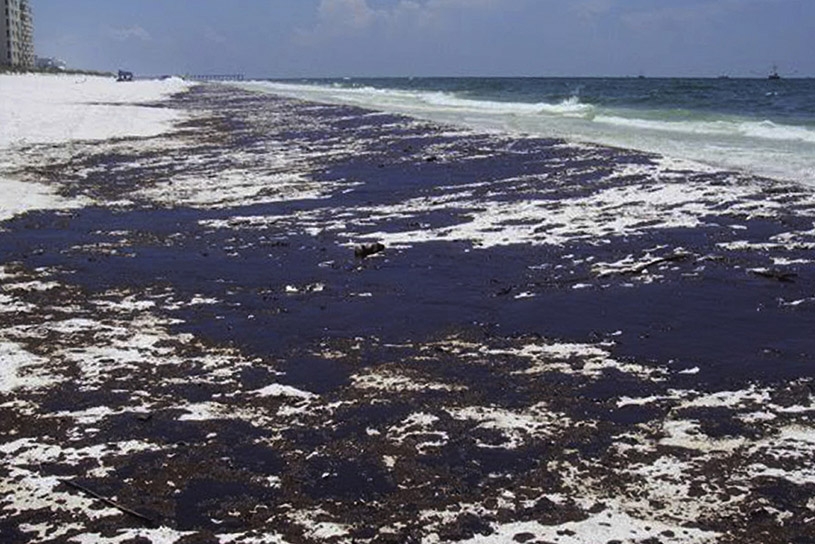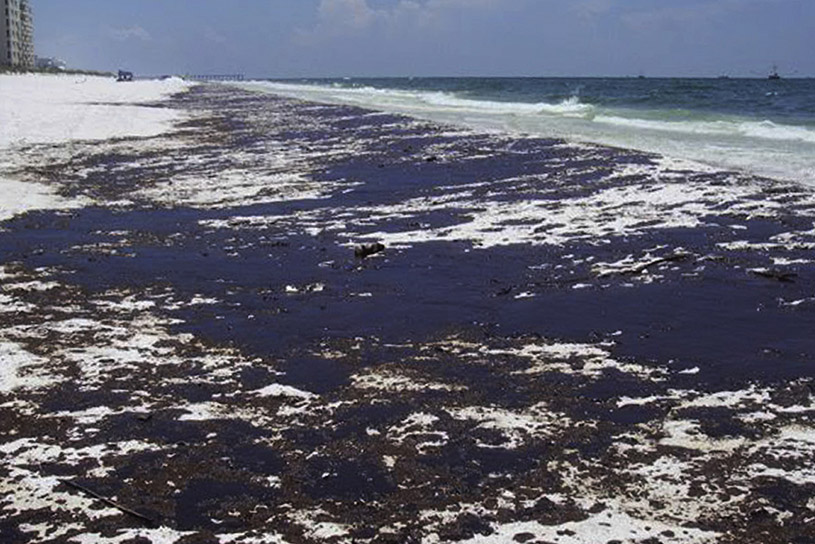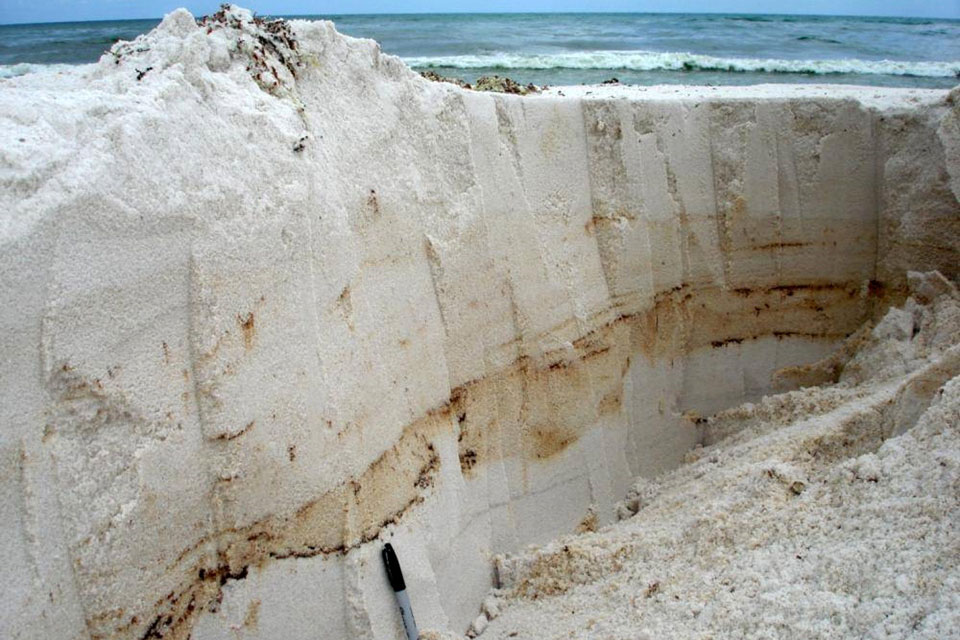
 |
 |
| Pensacola Beach in the Florida Panhandle, left, was one of the areas where oil washed ashore after the Deepwater Horizon oil spill in April 2010. Ph.D student Smruthi Karthikeyan was part of a research team that discovered a previously unnoticed family of bacteria on the beach that breaks down oil, and she was just recognized at the Gulf of Mexico Oil Spill & Ecosystem Science Conference for her work. The research team dug trenches on the beach, right, to collect sand at many points along the beach and using state-of-the-art genomic techniques to study the microbial community in the sand. (Left Photo Courtesy: Smruthi Karthikeyan, Right Photo: Markus Huettel) | |
 Karthikeyan |
Ph.D. student Smruthi Karthikeyan has returned from a gathering of scientists studying the 2010 Gulf of Mexico oil spill with the top award for student research.
Perhaps it’s no wonder: Karthikeyan helped discover a previously unnoticed family of oil-degrading bacteria that’s ubiquitous in oil-contaminated sand and soil but almost nonexistent in clean sediments.
“It appears that this microbe belongs to a new family of keystone oil degraders that has gone unnoticed so far and, thus, it could represent a new model organism for oil bioremediation efforts,” said Karthikeyan, who studies with Carlton S. Wilder Associate Professor Kostas Konstantinidis.
The team used cutting-edge genomic techniques to identify all the organisms in sand collected along Pensacola Beach in the Florida Panhandle, one of the areas where oil came ashore after the Deepwater Horizon spill in April 2010. Karthikeyan said they couldn’t detect the microbe in clean sand, but it made up roughly 30 percent of all microbes in contaminated areas, “which is quite remarkable for beach sands.”
Another interesting twist: this particular microbe didn’t require a nitrogen source like fertilizer, which is often added to contaminated soil to boost bioremediation efforts but has potentially harmful effects for the surrounding environment.
“We found that this metabolically versatile bacteria not only possessed the genes required to feast on oil, but could also fix its own nitrogen from the atmosphere, thereby eliminating the need to add any fertilizer or the like,” Karthikeyan said.
The discovery won Karthikeyan the James D. Watkins Student Award for Excellence in Research at the just-concluded Gulf of Mexico Oil Spill & Ecosystem Science Conference, a gathering of hundreds of researchers, site managers and industry representatives.
“The [Deepwater Horizon] event had a significant impact on various facets of the environment,” she said, “and the power of microbes in cleaning up oil spills could have great impacts in natural restoration of the ecosystem.”
